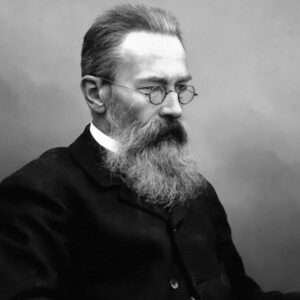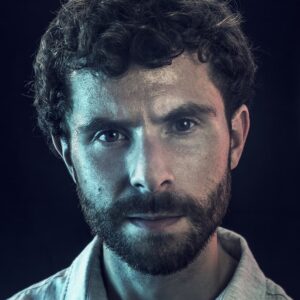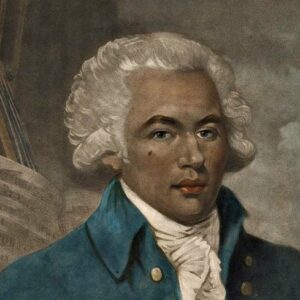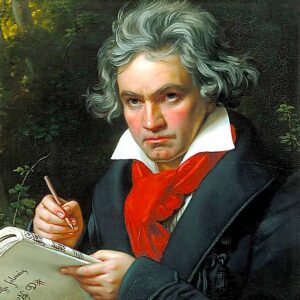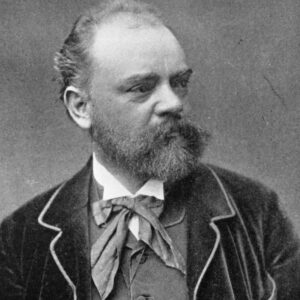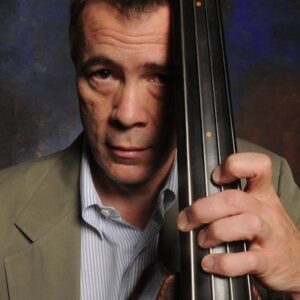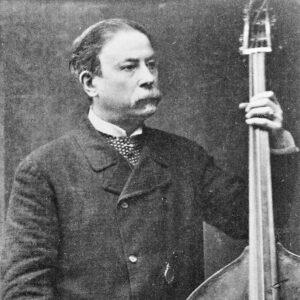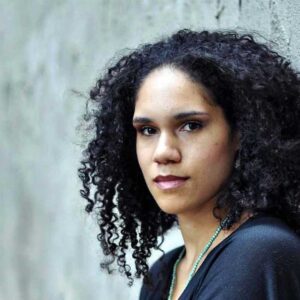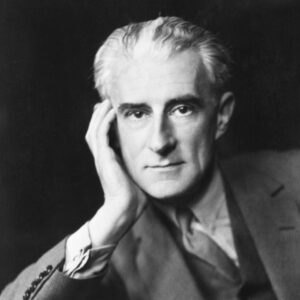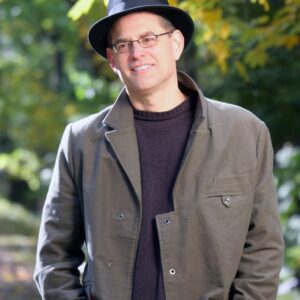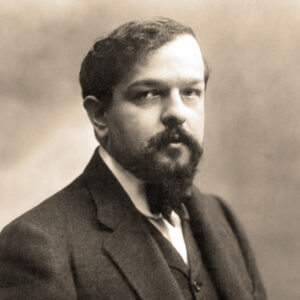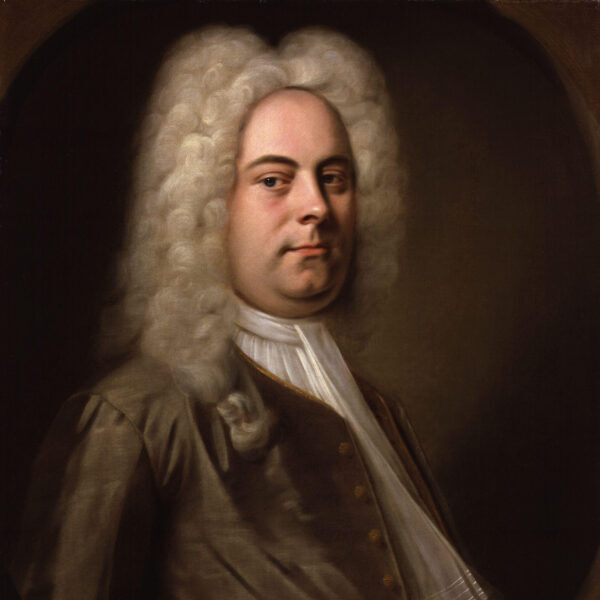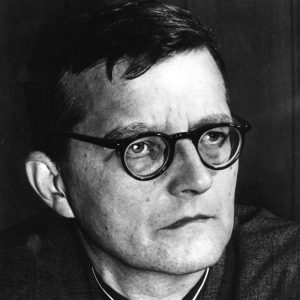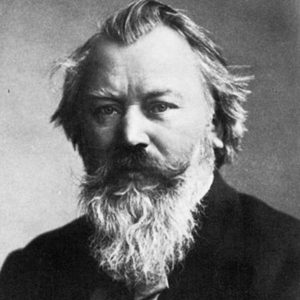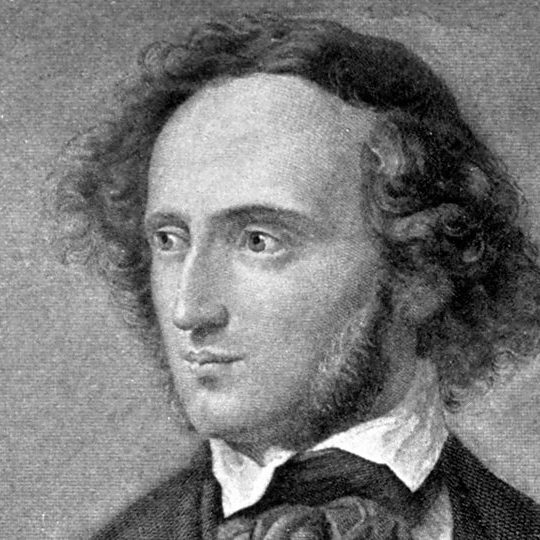
Felix Mendelssohn:
Overture to A Midsummer Night’s Dream
(Jacob Ludwig) Felix Mendelssohn(-Bartholdy) was born, February 3, 1809 in Hamburg and died November 4, 1847 in Leipzig. The Overture and Incidental Music to Shakespeare’s A Midsummer Night’s Dream are separated by some seventeen years (1826 and 1843, respectively). The music is scored for 2 solo female voices and women’s choir (incidental music) 2 flutes, 2 oboes, 2 clarinets, 2 bassoons, 2 horns, 2 trumpets, 3 trombones (incidental music) tuba (ophicleide), timpani, percussion (incidental music) and strings.
On the one hand it is altogether fitting to list Mendelssohn’s Overture and Incidental Music to A Midsummer Night’s Dream as separate works since seventeen years elapsed between the composition of the overture in 1826—inspired by the splendid translations of Ludwig Tieck and Friedrich Schlegel—and the thirteen pieces composed at the behest of King Friedrich Wilhelm IV of Prussia to accompany a performance of the play in 1843. Judging from the standpoint of stylistic consistency, however, one would scarcely be able to tell the difference.
Why is this so? Had Mendelssohn and his musical skill matured so little between the ages of seventeen and thirty-four? It is more appropriate to conclude, I would suggest, that the seamlessness of the two works bespeak at the same time the maturity of the youth, and the mature self-confidence of an adult who realized then, as we still do, that his youthful imagination was true to the essence of Shakespeare’s fanciful comedy. Wholesale change was hardly necessary. For some of the incidental pieces, Mendelssohn wisely reused thematic ideas found in the Overture. All the characters and elements of Shakespeare’s play are there in the overture—magical blessings of Oberon and Titania (bestowed by the woodwinds in the overture’s beginning and end), the quicksilver world of Puck and the fairies, the noble hunting horns of the Athenians, and the raucous “hee-haws” of the asinine Bottom. Miraculously, the young Mendelssohn weaves these materials in a sonata-form tone poem of astounding color. How appropriate the scurrying of the violins! How effective the use of pizzicato! The frightening low growls of bassoon, horn, and tuba (originally ophicleide) in the development section add an additional level of piquancy to this marvelous tone poem.
Program Notes by David B. Levy © 2010/2019

Sergei Rachmaninoff:
Piano Concerto No. 2 in C minor, Op. 18
Sergei Vassilevich Rachmaninoff was born in Oneg, Novgorod on March 20/April 1, 1873 and died in Beverly Hills, CA on March 28, 1943*. Famed as both pianist and composer, Rachmaninoff left Russia after the Revolution of 1917, eventually taking up residence in the United States. His Piano Concerto no. 2 was composed in 1900-01, and received the first performance of its last two movements in Moscow on December 2/15, 1900 in Moscow. The first performance of the entire piece took placeon October 27/November 9, 1901*. On both occasions the composer himself was the soloist, with Alexander Siloti conducting the Moscow Philharmonic. The Concerto no. 2 is scored for solo piano, 2 flutes, 2 oboes, 2 clarinets, 2 bassoons, 4 horns, 2 trumpets, 3 trombones, tuba, timpani, percussion, and strings.
*NB: The variation of dates reflect the difference between the Julian and Gregorian calendars.
The Russian-born pianist and composer Rachmaninoff falls into the tradition of the great performer-composers of the Romantic style that included figures such as Niccolo Paganini and Franz Liszt. Like his great predecessors at their best, his music avoids the self-indulgent kind of virtuosity-for-its-own-sake practiced by less gifted musicians. His music often is quite sentimental, but his melodic gifts were more than sufficient to prevent it from becoming maudlin. Although Rachmaninoff composed a wide variety of music, he is best known for his works for the piano, and his Concerto no. 2 is by far the most frequently performed of the four that he composed. His Rhapsody on a Theme of Paganini is also a popular favorite.
After the failure of his First Symphony in St. Petersburg, Rachmaninoff recorded in his Recollections that he lost all hope for any future success. In 1900 he sought psychiatric assistance from Dr. Nikolai Dahl, who, according to the composer, hypnotically persuaded him to continue work on a new piano concerto. Dr. Dahl’s positive approach seems to have workedand he became the recipient of the dedication of the Piano Concerto no. 2. The work received its first performance in 1901 in Moscow, and it was greeted with both critical and popular acclaim.
The work is in three broad movements. The first of these, Allegro moderato, begins quietly with chords solemnly played by the unaccompanied soloist. These grow in intensity, ushering in the lush first theme in the strings. A lyrical second theme emerges from the soloist, followed by a proper development section and a stirring recapitulation in martial style. The Adagio sostenuto is a movement of great beauty and tunefulness, whose serenity is only briefly interrupted by an animated middle section that calls for considerable dexterity. The last movement is marked Allegro scherzando, and it plays dramatically between the major and minor mode. As in the first movement, the finale’s second subject is highly lyrical. Following the lead of Tchaikovsky’s Piano Concerto no. 1, which seems to have served as a model for this piece, Rachmaninoff demarcates the climax of the movement with a tutti statement of the lyrical theme. This produces a triumphant effect, making for a stirring conclusion to the romantic masterpiece.
Program Note by David B. Levy © 2013/2019
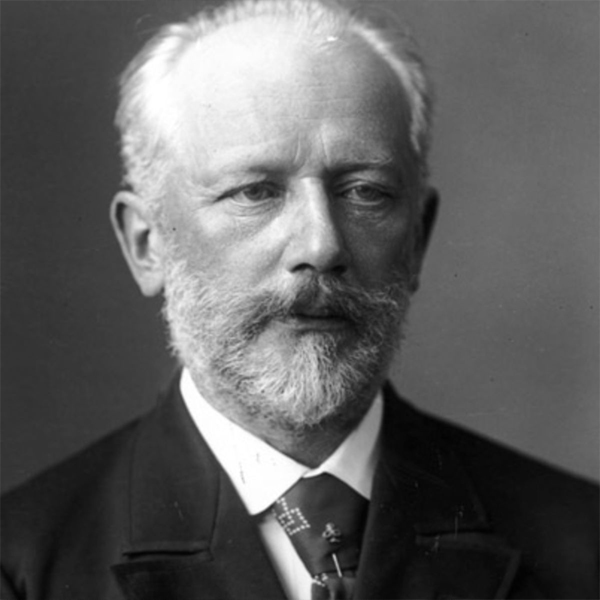
Pyotr Ilyich Tchaikovsky:
Suite from The Sleeping Beauty, Op. 66a
Pyotr Ilyich Tchaikovsky was born on May 7, 1840 in Votinsk, Russia and died on November 6, 1893 in Saint Petersburg. He remains one of the most popular composers of all time, beloved especially for his symphonies, ballets, and concertos. His ballet in three acts, The Sleeping Beauty, was composed in 1888-9 for a scenario derived by Marius Petipa from the Brother Grimm’s version of Charles Perrault’s La belle au bois dormant. It received its first performance on January 15, 1890 at St. Petersburg’s Mariinsky Theater. The orchestration for the five-movement suite derived from the complete ballet calls for 2 flutes and piccolo, 2 oboes, English horn, 2 clarinets, 2 bassoons, 4 horns, 4 trumpets, 3 trombones, tuba, timpani, percussion, harp, and strings.
One would be hard-pressed to find musical scores more beloved by audiences than the ones composed by Tchaikovsky for his three popular ballets: Swan Lake, The Sleeping Beauty, and The Nutcracker. The Sleeping Beauty, whose earliest manifestations belong to the collection of stories known as Mother Goose, is familiar to all, if to Americans only through the magic of Walt Disney’s filmic version. The basics of the story of Princess Aurora’s fate and rescue by Prince Charming needs no retelling here. In the ballet’s scenario we meet not only the two principal characters, but a long list of others, including the Princess’s parents, courtiers, fairies, suitors, and fairytale characters. All ends happily with the couple’s wedding feast.
The movements derived from the ballet that form the suite include an Introduction, Pas d’Action: Adagio (derived from Act I), the humorous Pas de caractère: Le Chat Botte et la Chat blanc (Act III, No. 24), Panorama: Andantino (Act II), and ending with the famous Waltz (Act I).
Notes by David B. Levy © 2019



